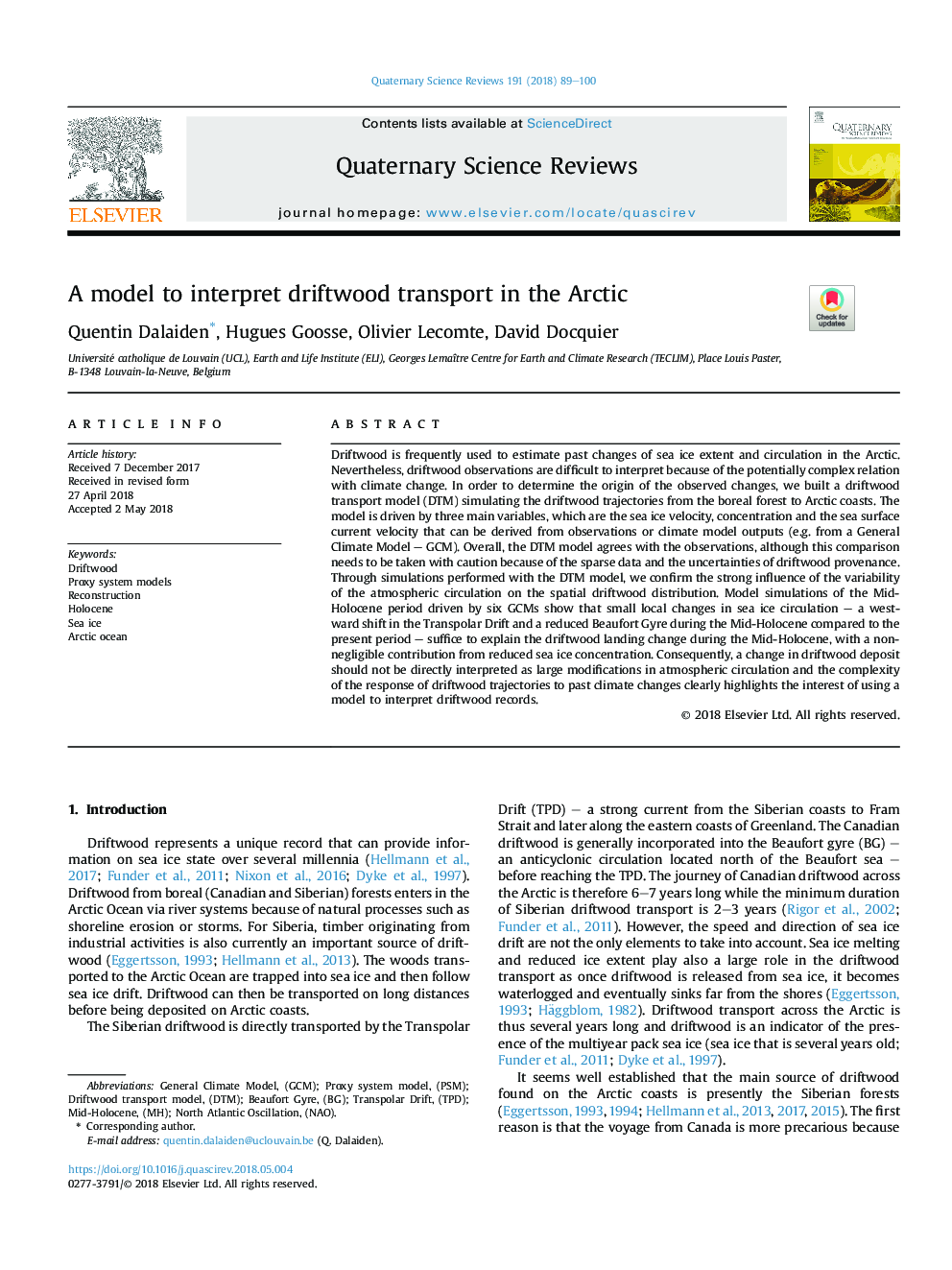| Article ID | Journal | Published Year | Pages | File Type |
|---|---|---|---|---|
| 8914749 | Quaternary Science Reviews | 2018 | 12 Pages |
Abstract
Driftwood is frequently used to estimate past changes of sea ice extent and circulation in the Arctic. Nevertheless, driftwood observations are difficult to interpret because of the potentially complex relation with climate change. In order to determine the origin of the observed changes, we built a driftwood transport model (DTM) simulating the driftwood trajectories from the boreal forest to Arctic coasts. The model is driven by three main variables, which are the sea ice velocity, concentration and the sea surface current velocity that can be derived from observations or climate model outputs (e.g. from a General Climate Model - GCM). Overall, the DTM model agrees with the observations, although this comparison needs to be taken with caution because of the sparse data and the uncertainties of driftwood provenance. Through simulations performed with the DTM model, we confirm the strong influence of the variability of the atmospheric circulation on the spatial driftwood distribution. Model simulations of the Mid-Holocene period driven by six GCMs show that small local changes in sea ice circulation - a westward shift in the Transpolar Drift and a reduced Beaufort Gyre during the Mid-Holocene compared to the present period - suffice to explain the driftwood landing change during the Mid-Holocene, with a non-negligible contribution from reduced sea ice concentration. Consequently, a change in driftwood deposit should not be directly interpreted as large modifications in atmospheric circulation and the complexity of the response of driftwood trajectories to past climate changes clearly highlights the interest of using a model to interpret driftwood records.
Keywords
Related Topics
Physical Sciences and Engineering
Earth and Planetary Sciences
Geology
Authors
Quentin Dalaiden, Hugues Goosse, Olivier Lecomte, David Docquier,
